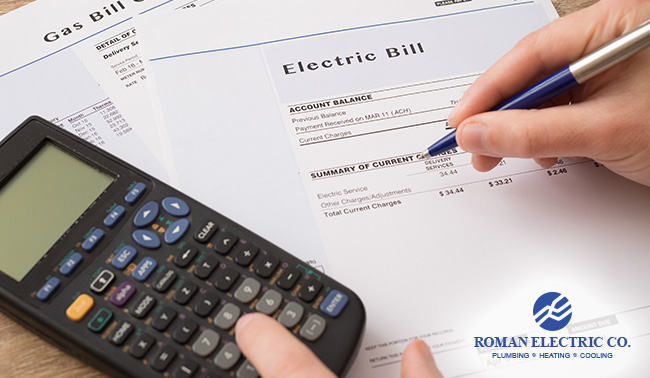Every month, we receive that piece of paper in the mail that none of us ever like to see. When the energy bill arrives, we hold our breath while we open it. Is it going to be ridiculously high, or is it more manageable this month? We’re not going to get into the most effective strategies for lowering your energy usage, at least not in this blog.
For this one, we’re going to take a step back and approach it from a more general angle. Before you figure out how to lower your energy bill, it’s important that you learn to better understand it in the first place! Here’s how to do just that, from the energy pros at Roman Electric!
The Important Parts
When you glance at your energy bill, there are a handful of numbers or items that should be the most important. These are the ones you’ll obviously want to look at every month – and unless you just pay the bill without looking, you already take a glance at these numbers anyway.
- Amount Due: Of course! This is the number most everyone cares about more than anything. How much you’re paying is a good thing to know. It’ll usually be easily discernible and printed clearly.
- Account Number: Assuming your energy provider does business like the majority of the other ones in America do, you’ll see your account number printed somewhere on the bill. This gives you a handy reference point when you’ve got a complaint or question you need to bring up with your provider.
- kWh Used: This number is how the utility company determines how much to charge you. The electricity meter shows a certain number indicating how many kilowatt-hours you used, and they multiply that number by your rate to determine the bill.
Other Items on the Bill
That just scratches the surface. There are plenty of other numbers and labels on the bill, but they aren’t as important in terms of figuring out how much energy you’re using and how much you’re paying.
- Charge Breakdown: The bill will probably itemize the different components of your total amount due. This will be made up of things like a generation charge (which will be the bulk of your bill), distribution charge and a transmission charge. Although most of your energy is spent generating the electricity, it costs money to get it to travel down the wires and to your home.
- Graph showing your energy profile: It helps to know how much energy you’ve been using compared to recent months. Most energy providers will include a bar graph, or something similar, displaying your usage from month-to-month to help you keep your consumption in check.
The energy bill is never any fun, but it’s smart to be an educated consumer so you know what you’re getting each month. Of course, it’s always probably smartest to call your energy provider if you’ve got specific questions.
Here at Roman Electric, though, we pride ourselves on helping our Milwaukee neighbors create the most energy-efficient homes around. Get in touch with us, and we’ll work with you to implement solutions that are tailored specifically for you and your family.
Call us at 414-369-3798 for more information!

